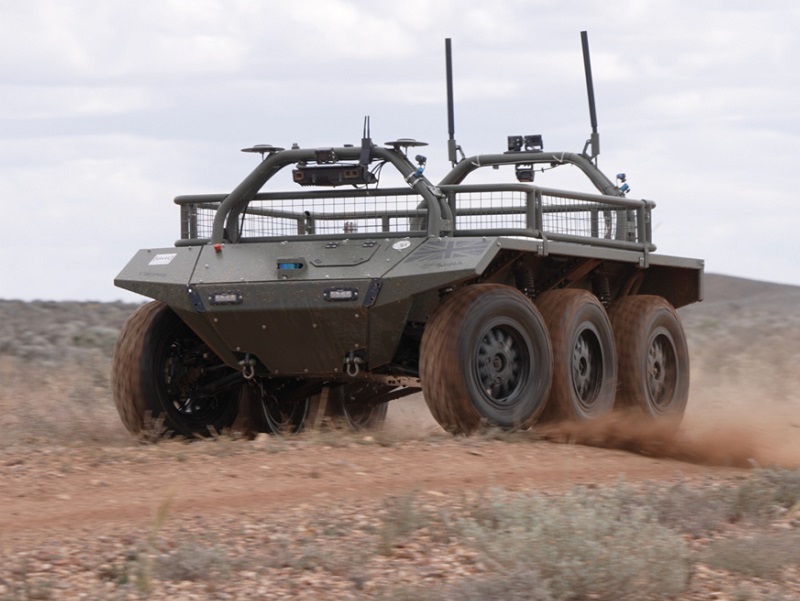Australian defence scientists have carried out a series of trial electronic attacks against robotic vehicles operated by the United States and the United Kingdom as part of the latest advanced technologies trial under AUKUS.
The exercise, which took place in South Australia in late 2023, was designed to gauge the behaviour of autonomic vehicles when under attack, a joint statement released by the three nations said on Tuesday.
It is the second known trial under Pillar II, which is focused on developing capabilities across undersea robotics, quantum computing, artificial intelligence, cybersecurity, hypersonic and electronic warfare.

The Trusted Operations of Robotic Vehicles in a Contested Environment (TORVICE) project involved configuring robotic ground vehicles from the UK and US to imitate “autonomous multi-domain launchers and un-crewed ground vehicles conducting long-range precision fires”.
Scientists from the Defence Science and Technology Group (DSTG) then “subjected the vehicles to electronic warfare, electro optical and position, navigation, and timing attacks”. Electronic warfare is used to disrupt technologies and render them inoperable.
DSTG’s chief of land and integrated force Shane Canney said the TORVICE project led by the AI and autonomy working group was designed to help the three nations test leading-edge AI in un-crewed robotic vehicles when under attack.
“Understanding how robotics vehicles react in contested environments accelerates our collective know-how and helps improve the system to overcome such attacks,” Dr Canney said, adding that trusted robotic capabilities is a priority for warfighters.
Kimberly Sablon, the US Department of Defense’s principal director for trusted AI and autonomy, said the trial built on the first AUKUS Pillar II trial in the UK last April. That trial tested AI models on unmanned aerial vehicles, demonstrating “several world firsts” in the process.
“During this exercise, we performed rigorous red teaming of our autonomous and AI systems to assess and mitigate vulnerabilities and to improve their resilience in contested and complex environments,” Dr Sablon said.
In December, Defence minister Richard Marles and his US and UK counterparts committed to advance work to adopt resilient and autonomous AI technologies (RAAIT) in land and maritime domains in 2024.
US legislation to expedite defence and advanced technology transfers and investment with Australia under AUKUS Pillar I and II also passed US Congress in December, leaving only US President Joe Biden to sign off.
Australia’s export controls bill is currently before a Senate committee, which is expected to report by April. The bill will introduce a “licence-free environment” for technology sharing between AUKUS partners, but makes it harder for local companies and research to work with other countries.
Do you know more? Contact James Riley via Email.

